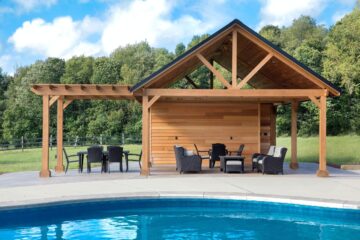Proper steps to take when restoring a log home — success will follow when taking these proper steps
Log Homes are beautiful structures, and that natural beauty, like most wood structures, needs protection but first proper preparation is required. The project’s success begins with these preparation steps.

First, the surface must be clean, dry, and in good condition. Remove all mildew, dirt, loose wood fibers, oil, and grease. Repair or replace any loose, cracked, or warped boards. All mildew (dark, fuzzy, or powdery deposits) must be removed with the following solution: 1⁄3 cup heavy-duty laundry detergent to 1‑quart household bleach to 3 quarts of warm water. Wear protective eye goggles and waterproof gloves when handling cleaning solutions. Apply with a scrubbing brush, rinse thoroughly, and dry before staining.

For Grayed Wood Exposed to UV (Sunlight), lightly sand or power wash the surface to remove degraded wood fibers. Clean the surface according to Surface Preparation instructions. Allow the wood to dry thoroughly after power washing and before applying the stain.
Remove any rotted wood along with any old stains and paints to provide you with the optimal surface for future stain adhesion and performance.
Many older wood homes have an old stain paint or clear coat on them, and most homeowners don’t know which brand or type of stain it is unless that old paint or stain is in good shape; it’s best to remove it altogether. Be aware of severe rotten or insect infestation that can affect the home’s structural integrity. Insect infestation must be eliminated, and the rot must be removed before moving forward with finishing.
The wood must have a moisture content of 20% or lower, which is best determined by a moisture meter. If you don’t have a meter and wish to see if the wood is ready to stain, sprinkle a few drops of water on it. If the water is easily absorbed, proceed. If not, wait 3 – 4 months and retest.

Although the wood is dry to the touch, that doesn’t necessarily mean that the moisture has completely evaporated from the substrate. Too much moisture can cause several issues such as peeling, flaking, chipping, poor adhesion, mold, mildew, and rot. All moisture-induced problems can be expensive to fix and reoccur if their causes are not determined and fixed.
Choosing a good quality stain will complete the overall look and protection you want to achieve with your build. It’s important to request samples and test several different stain colors to ensure you get the color you desire. Apply the stain sample to your home in several areas to ensure you get the color you want.






